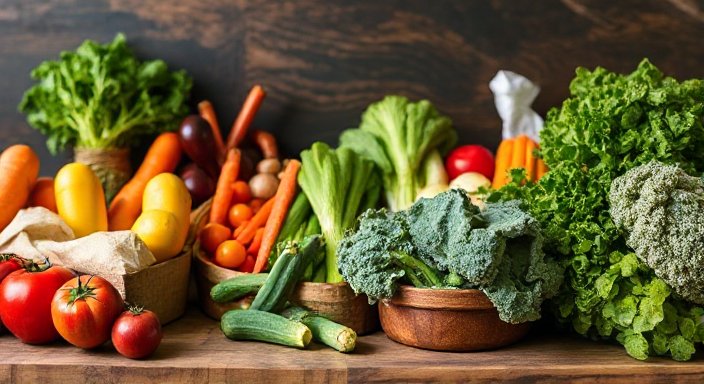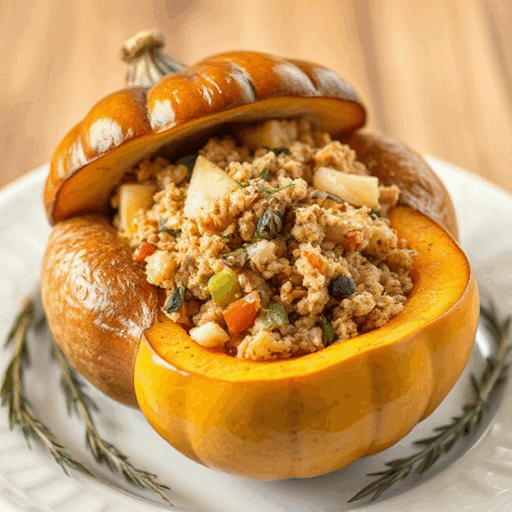What are the Collagen-rich foods?
Collagen is a body-produced fibrillar protein that gives elasticity and…

In a world full of quick fixes, fast foods, and highly processed options, the simplicity and power of whole foods are often forgotten. Whole foods—the fruits, vegetables, nuts, seeds, proteins, and natural ingredients that nourish us in their most unprocessed forms—are the foundation of a healthy, thriving body. Yet, many people unknowingly swap these gifts of nature for “fake foods” that are stripped of nutrients and filled with additives that do more harm than good.
If you’re on a journey to reduce inflammation, restore energy, and reclaim your health, choosing whole foods is one of the most impactful shifts you can make. Today, I’ll explain what whole foods are, why they matter, how fake foods harm your body, and practical ways to embrace real nourishment—without relying on dairy, nightshades, or whole grains.
What Are Whole Foods?
Whole foods are foods in their most natural, unprocessed state. They are free from artificial additives, preservatives, and unnecessary fillers. These are the foods that come directly from nature—vibrant, nutrient-dense, and full of life.
Think of fresh vegetables like kale, zucchini, and carrots, ripe berries bursting with antioxidants, heart-healthy fats from avocados and nuts, and proteins like wild-caught salmon, free-range poultry, or legumes. Whole foods are what our bodies were designed to thrive on, offering nutrients in their perfect, unaltered form.
In contrast, “fake foods” are highly processed. They are stripped of their natural nutrients and loaded with sugar, unhealthy fats, artificial flavors, and chemicals to mimic taste or texture. These foods might look appealing, but they offer little to no true nourishment—and worse, they disrupt the natural balance of our bodies.
Why Whole Foods Matter
Whole foods are more than just fuel; they provide the building blocks for every cell in your body. Here are a few reasons why choosing whole foods over fake foods can transform your health:
1. Whole Foods Reduce Inflammation
Chronic inflammation is at the root of many health conditions—from joint pain and digestive discomfort to autoimmune disorders and heart disease. Whole foods, especially leafy greens, colorful vegetables, berries, and omega-3-rich proteins like wild-caught fish, are packed with antioxidants, vitamins, and anti-inflammatory compounds that help calm inflammation.
By choosing whole foods, you give your body the tools to fight oxidative stress, reduce swelling, and support healing. On the other hand, fake foods loaded with refined sugar, trans fats, and artificial ingredients promote inflammation, leaving your body in a constant state of stress.
2. Whole Foods Support Gut Health
Your gut is the gateway to overall health. A well-nourished gut strengthens your immune system, improves digestion, and even supports mental well-being. Whole foods like fiber-rich vegetables (think broccoli, carrots, and cauliflower), seeds like flax or chia, and healthy fats from avocados and nuts feed the good bacteria in your gut.
In contrast, fake foods—often filled with artificial sweeteners, preservatives, and refined carbohydrates—disrupt the gut microbiome, feeding harmful bacteria and promoting inflammation. This imbalance can lead to bloating, poor digestion, and even leaky gut syndrome.
3. Whole Foods Provide Lasting Energy
Fake foods often offer a quick energy boost, but it’s short-lived and followed by an inevitable crash. Highly refined carbohydrates, like sugary snacks or processed cereals, spike your blood sugar, leading to energy dips and cravings.
Whole foods, on the other hand, provide steady, sustainable energy. Nutrient-dense options like sweet potatoes, fresh berries, avocados, and lean proteins are broken down slowly, keeping your blood sugar stable and your energy levels balanced throughout the day. The combination of fiber, healthy fats, and protein keeps you fuller for longer and avoids those rollercoaster energy crashes.
4. Whole Foods Nourish the Skin and Body
The health of your skin, hair, and nails reflects what you eat. Whole foods provide essential nutrients—like vitamin C, zinc, and omega-3 fatty acids—that repair and regenerate tissues, keeping you looking and feeling vibrant.
For example, fresh vegetables like zucchini and bell peppers are loaded with antioxidants that fight free radicals, while seeds and nuts like almonds and flaxseeds provide the healthy fats your body needs for glowing skin. In contrast, fake foods packed with sugar and artificial additives often lead to dull skin, breakouts, and inflammation.
The Problem with Fake Foods
Fake foods are designed to appeal to taste buds, not to nourish. Here are a few reasons why processed foods are problematic:
Simple Ways to Embrace Whole Foods
Transitioning to a whole-foods lifestyle doesn’t need to be overwhelming. Here are practical ways to make it part of your everyday life:
The Bottom Line: Real Food, Real Health
Choosing whole foods is about reconnecting with the nourishment nature provides. When you fill your plate with vibrant vegetables, healing proteins, and healthy fats, you fuel your body with everything it needs to heal, thrive, and flourish.
Whole foods work with your body—calming inflammation, balancing energy, improving gut health, and leaving you feeling vibrant from the inside out. On the other hand, fake foods deplete your energy, trigger inflammation, and leave you craving more while offering little to no nourishment.
As you begin to choose whole foods over processed options, you’ll notice small changes—a clearer mind, better digestion, glowing skin, and a renewed sense of energy. These small changes will build, and over time, you’ll discover just how powerful real, unprocessed foods can be.
The beauty of whole foods is their simplicity. They don’t need artificial colors, preservatives, or sweeteners to be delicious. The flavors, textures, and nourishment they provide speak for themselves.
Collagen is a body-produced fibrillar protein that gives elasticity and…
copyright © 2025 Anti-Inflammatory Approach. All rights reserved. Unauthorized reproduction, distribution, or use of any content, including text, images, recipes, or other materials on this website, is strictly prohibited without prior written permission. This website’s content is provided for informational purposes only and does not constitute medical or professional advice.


This $1 anti-inflammatory cookbook is packed with simple, tasty recipes to reduce inflammation and improve energy. Don’t miss out—get it now on Amazon!